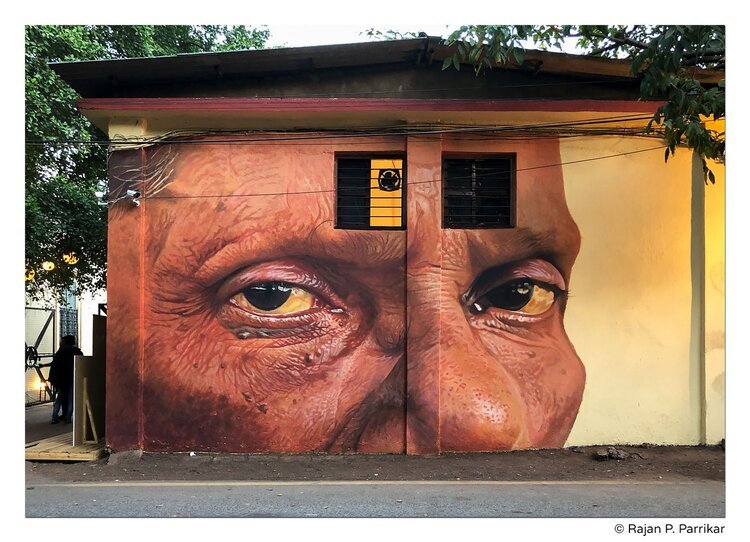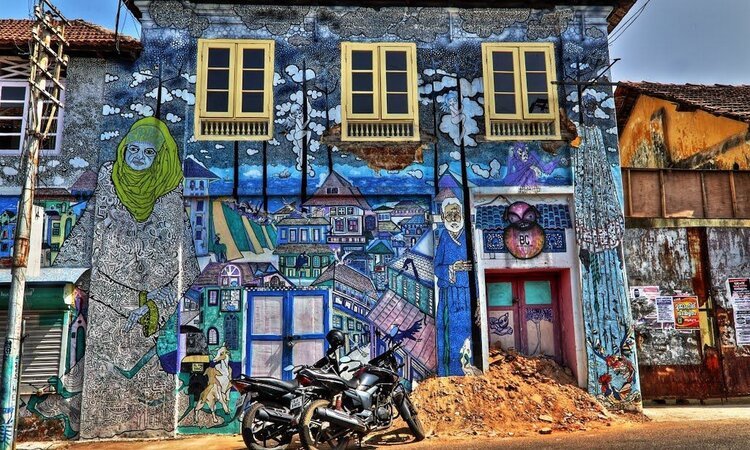Mural Art
Any piece of artwork painted or put directly on a wall, ceiling, or other permanent surface is referred to as a mural. The architectural aspects of the given space are harmoniously merged into the painting, which is a defining feature of mural painting. Some wall paintings are created on enormous canvases and then hung on the wall. This technique has been in common use since the late 19th century.
Historic Examples of Murals:
Cave paintings in the Lubang Jeriji Saléh cave in Borneo (40,000-52,000 BC)
Chauvet Cave in the Ardèche department of southern France are examples of Upper Paleolithic murals (around 32,000 BC).
Many ancient murals have been discovered in Egyptian tombs (about 3150 BC) and
Minoan palaces (1700–1600 BC).
Kerala mural paintings from the 14th century are examples of fresco secco.
Modern Commission:
Private commissions can be for dining rooms, baths, living rooms, or children's bedrooms, as is frequently the case. A child's room can be turned into a 'dreamworld' of a forest or a racetrack, stimulating imaginative play and an appreciation for art. Many people like expressing their uniqueness by ordering a mural to be painted in their home. Owners of huge houses are not the only ones who can participate in this activity. A mural artist's only limitation is the charge, and thus the amount of time spent on the painting, which dictates the level of intricacy; a basic mural can be put to even the tiniest of walls. Muralists in the United Kingdom have seen an upsurge in commissions due to the current demand for feature walls. A large hand-painted mural can be constructed around a specific theme, include personal imagery and elements, and be changed as the painting progresses. For someone who isn't regularly involved with the arts, the personal relationship between customer and muralist is typically a once-in-a-lifetime experience. A person can either use paint or graffiti to make a mural.
Murals in India:
Goa:
Goa has long been known as a hotbed of contemporary art. There are some great streets that may draw your attention simply by their vibrancy. These walls also have fantastic inscriptions on them, either humorous or educational. The same has been painted on the streets of Old Goa, which is a popular tourist destination.
Bangalore:
Murals and graffiti are more than just paintings; they are expressions of the most powerful messages, admiration for art, and the dissemination of messages. People have always sought solutions to difficulties, and it coruscates the area and encourages more footfall in the dull streets. It could also take the form of Residual urban design.
Kerala:
Kerala street art is replete with the well-known art dance Kathakali, which depicts Kerala culture. They collaborate with all Indian artists, and everyone maps the art together on buildings, walls, and abandoned locations during the festival.
Mumbai:
Mumbai is one of the iconic artistic places in India. With the hustle, it carries enthusiasm, vibe, and funk to be called the perfect city for living in your 20s while you’re running behind your dreams but also need to calm yourself once in a while.
Kolkata:
Kolkata has always been known for its rich past, wonderful old foods, and the turmoil in the streets, all of which are awe-inspiring to someone who wishes to depict India's culture. As a result, it is also becoming a favourite location for graffiti and mural art. Park Street, Loudon Street, and St. Lawrence High School are some of the more well-known streets for this.
Comment below which of our paintings should be murals on a painting.







